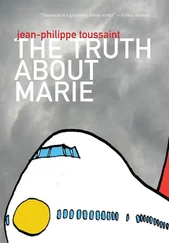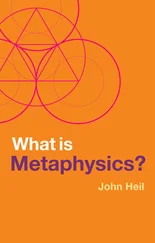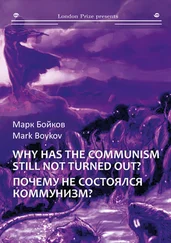[T]he horror story, beneath its fangs and fright wig, is really as conservative as an Illinois Republican in a three-piece pinstriped suit…. [I]ts main purpose is to reaffirm the virtues of the norm by showing us what awful things happen to people who venture into taboo lands. Within the framework of most horror tales we find a moral code so strong it would make a Puritan smile.
So how should we respond to mass-shooting tragedies? First, we must resist the reflex to find and torch a scapegoat, whether in the entertainment industry or the gun lobby. Even if we could keep unstable people from consuming imaginary violence, they could still find plenty of inspiration from the nightly news, history, holy Scripture, or their own fevered dreams. And even if we were able to pass laws that kept guns out of the hands of bad men (a tall order in a country with an estimated 300 million guns in private circulation), how would we keep them from killing with improvised explosives or by plowing SUVs into crowds?
Second, hard as it is, we must struggle to keep these acts of terrorism in perspective. We are all in much more danger from a simple traffic accident on the way to a school, a theatre, a political rally than we are from gunfire once we get there. We would save many more lives by, say, focusing on highway safety than by putting guns in the hands of “good people” or rekindling culture wars over the role of guns and entertainment in American life. It’s a cliché, but true: When we overreact, the terrorist wins. When we overreact, we give the sicko meme of the mass shooting the attention it needs to thrive.
So here’s what shouldn’t worry us: fictional violence.
Here’s what should: the way our very understandable pain and fear lead us to respond ineffectively to real violence.
A WORLD OF CASCADING CRISES
PETER SCHWARTZ
Futurist, business strategist; senior vice president for global government relations & strategic planning, Salesforce.com; author, Inevitable Surprises
Hardly a day passes when we do not hear of some major crisis in the world, one already unfolding or a new one just beginning, and they never seem to end. We are now living in a world of perpetual crisis and the high anxiety it produces. Crises are not new. Human societies have experienced natural disasters, wars, famines, revolutions, political collapse, plagues, depressions, and more. But two conditions are new. First, the interconnection of the world’s many systems often lead one crisis to cascade into the next like falling dominoes. Second, because of global communications and new media, we are all far more aware of more of the crises than ever before.
One of the best examples of the first is the recent financial crisis that began in the sub-prime mortgage market, when fear outweighed hope and cascaded through our banking system, our economy, triggering the Euro crisis and slowing growth in China. And the monetary measures we took to save the economy at the height of the crisis may yet trigger an inflationary crisis, when growth starts to recover and capacity fails to catch up with new demand.
The public’s view of violence is a good example of the second new dynamic, that of heightened awareness. Steven Pinker has elegantly shown us that the real threat of violence in most of our lives has diminished dramatically. Yet most of us believe, because of the constant drumbeat of reporting on violence, that the threat is far greater than it actually is. The absence of children playing on suburban streets is a sign of how scared parents are of the threat of kidnapping, which actually remains very small.
So if some of the issue is an increase in crises driven by interconnection, and some merely a perceptual issue, why should we be worried? Because living in a world of high anxiety often leads us to do the wrong things. We adopt short-term and local solutions rather than taking a systemic and long-term view. Does anyone believe that continuing financial innovation will not lead to another financial crisis in the near future? And yet the structural issues are not even being discussed. Our huge overreactions to 9/11 and to drug use have led to a perpetual security state from which we cannot return. Vast numbers of people are incarcerated at a huge cost for something that should not even be a crime. And we all pay the Bin Laden tax when we put up with the costs and disruptions of airport security. And of course our political systems play into this with a vengeance, because they are notoriously poor at systemic and long-term solutions, and those perverse instincts are amped up by the public sense of perpetual crisis. There has been an inevitable loss of faith in institutions’ ability to get ahead of the curve and tamp down the trembling state of anxiety the world now seems unable to shake off.
There is no apparent way back from this sense of teetering on the precipice. We cannot disconnect the world’s functional systems and we cannot disconnect our awareness from the world’s information systems. This is our new reality: high anxiety driven by cascading crises, real and imagined.
WHO GETS TO PLAY IN THE SCIENCE BALLPARK
STEPHON H. ALEXANDER
Ernest Everett Just 1907 Professor of Natural Sciences & associate professor of physics & astronomy, Dartmouth College
I am worried about who gets to be a player in the science game—and who is left out. As I was growing up in New York, I was always encouraged and rewarded for my involvement in jazz. Fellow musicians, elders, and contemporaries, while demanding excellence, remained inclusive; everyone was given a chance to solo, and if you were good enough you could get called back up.
Unfortunately, with the exception of a few enlightened individuals, professional inclusion has not been the collective experience of underrepresented groups in certain scientific disciplines. (This goes beyond ethnicity and includes underrepresented people who also “think differently.”) Given the U.S. population trends, some argue that for us to be competitive in STEM-related fields we’ll need to extend the scientific enterprise to the increasing Latino and black populations. I worry that while funding structures tend to address this issue at the K-12 and college levels, there has been little serious discussion about recruiting and promoting persons of color in the academy. Much research has shown that a lack of role models for these underrepresented groups negatively affects excellence and retention.
The issue of lack of inclusivity in science goes beyond the usual discourse surrounding affirmative action. Exceptionally talented individuals, regardless of their background, should not be made to feel that an opportunity was bestowed on them because of a policy instead of their abilities. The scientific community needs to go beyond tolerance of difference, to the genuine appreciation of difference, including those differences that make us feel uncomfortable. Especially an appreciation of those who see the world differently from us and think differently from us.
I understand that the issue of racial inclusivity is sensitive and loaded with complicated sociological and political overtones. I do think it is an elephant in the room that needs to be dealt with by us as a scientific community. We need to be honest and open. As the demographics of the United States (and the world at large) change, do we care to prepare our academies, at all levels, to share resources and influence with the currently underrepresented. In the spirit of my friend Brian Eno’s contribution, I have taken the challenge to bring up something that may make people uncomfortable—because it is more productive to do so than to be polite.
AN EXPLODING NUMBER OF NEW ILLEGAL DRUGS
THOMAS METZINGER
Читать дальше












